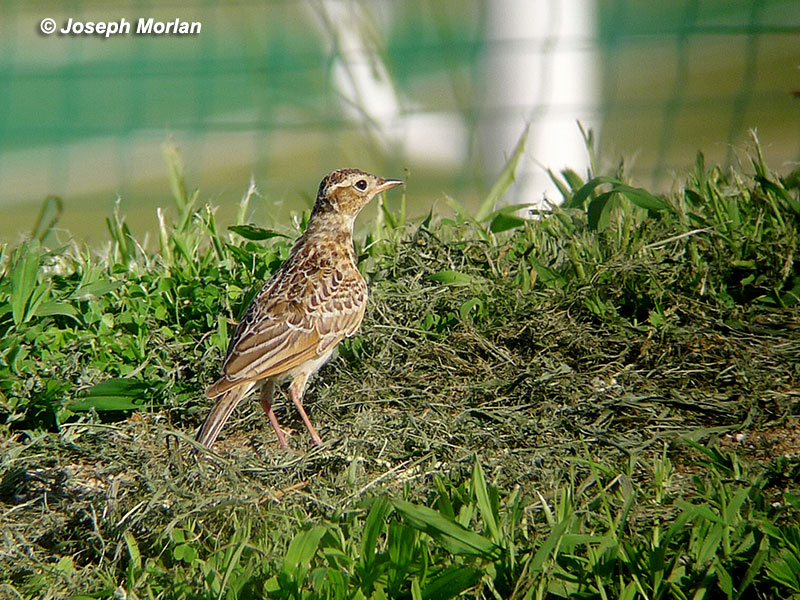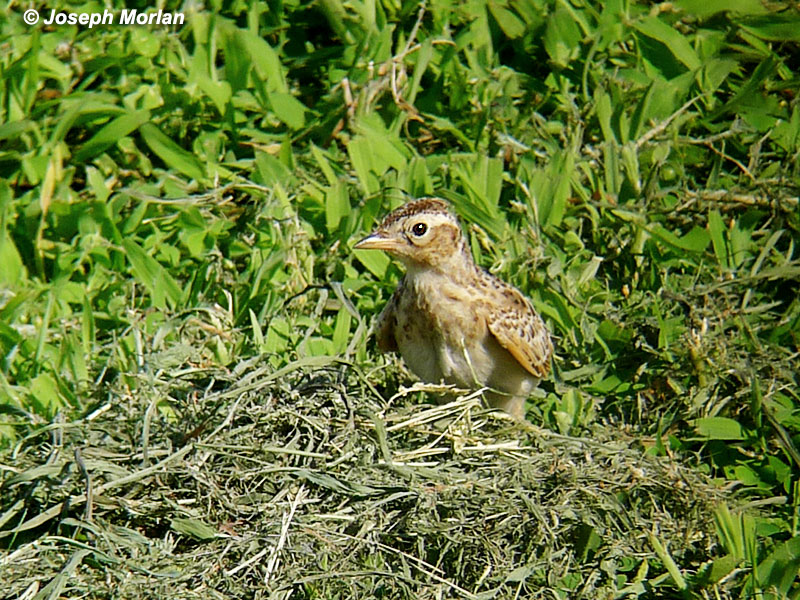

This is a juvenile, showing bold white fringing on the mantle and wing coverts. It was part of a flock of four young birds foraging in recently mowed grass. I was particularly interested in this race of the Sky Lark, a.k.a. Eurasian Skylark or Common Skylark. I had studied geographic variation in this species with respect to a vagrant which occurred in California and came to the conclusion that japonica was misclassified as a race of A. arvensis. I had thought it was better classified as a race of the Oriental Skylark (A. gulgula) or possibly a separate species. Russian ornithologists have reported sympatry between japonica and other races of arvensis in Sakhalin and the Kuriles. If valid, the Japanese bird cannot be a race of arvensis. (Brazil 2009).
I was impressed by the buffy tips to the secondaries (in flight), the proportionately long, thin bill and short primary projection compared to A. arvensis. All of these features are more like A. gulgula which is resident in China. Also japonica is non-migratory unlike all other races of A. arvensis but like most populations of gulgula. This photo shows the rusty wing panel formed by the edges of the primaries typical of A. gulgula.
These birds called frequently and their vocalizations sounded thinner, drier, and higher pitched than what I expect from A. arvensis.
Digiscoped with Panasonic DMC-LX5 | Nikon FieldScope III | 30XWA | hand-held (no adapter).
References:
Brazil, M. 2009. Birds of East Asia. Princeton Univ. Press.
Morlan, J. and R. A. Erickson. 1983. A Eurasian Skylark at Point Reyes, California, with notes on skylark identification and systematics. Western Birds 14:113-126. [PDF]